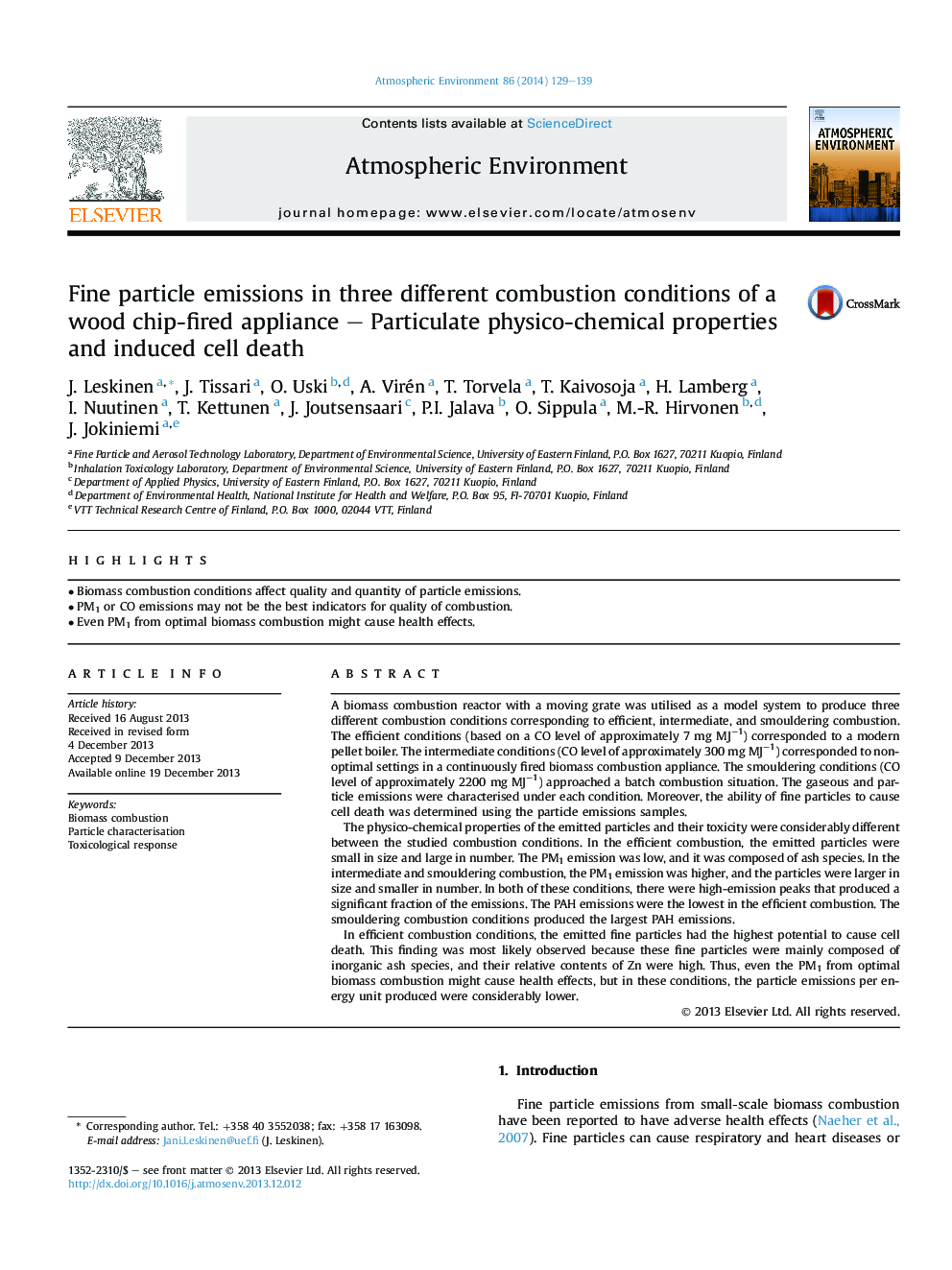| Article ID | Journal | Published Year | Pages | File Type |
|---|---|---|---|---|
| 6340793 | Atmospheric Environment | 2014 | 11 Pages |
â¢Biomass combustion conditions affect quality and quantity of particle emissions.â¢PM1 or CO emissions may not be the best indicators for quality of combustion.â¢Even PM1 from optimal biomass combustion might cause health effects.
A biomass combustion reactor with a moving grate was utilised as a model system to produce three different combustion conditions corresponding to efficient, intermediate, and smouldering combustion. The efficient conditions (based on a CO level of approximately 7 mg MJâ1) corresponded to a modern pellet boiler. The intermediate conditions (CO level of approximately 300 mg MJâ1) corresponded to non-optimal settings in a continuously fired biomass combustion appliance. The smouldering conditions (CO level of approximately 2200 mg MJâ1) approached a batch combustion situation. The gaseous and particle emissions were characterised under each condition. Moreover, the ability of fine particles to cause cell death was determined using the particle emissions samples.The physico-chemical properties of the emitted particles and their toxicity were considerably different between the studied combustion conditions. In the efficient combustion, the emitted particles were small in size and large in number. The PM1 emission was low, and it was composed of ash species. In the intermediate and smouldering combustion, the PM1 emission was higher, and the particles were larger in size and smaller in number. In both of these conditions, there were high-emission peaks that produced a significant fraction of the emissions. The PAH emissions were the lowest in the efficient combustion. The smouldering combustion conditions produced the largest PAH emissions.In efficient combustion conditions, the emitted fine particles had the highest potential to cause cell death. This finding was most likely observed because these fine particles were mainly composed of inorganic ash species, and their relative contents of Zn were high. Thus, even the PM1 from optimal biomass combustion might cause health effects, but in these conditions, the particle emissions per energy unit produced were considerably lower.
